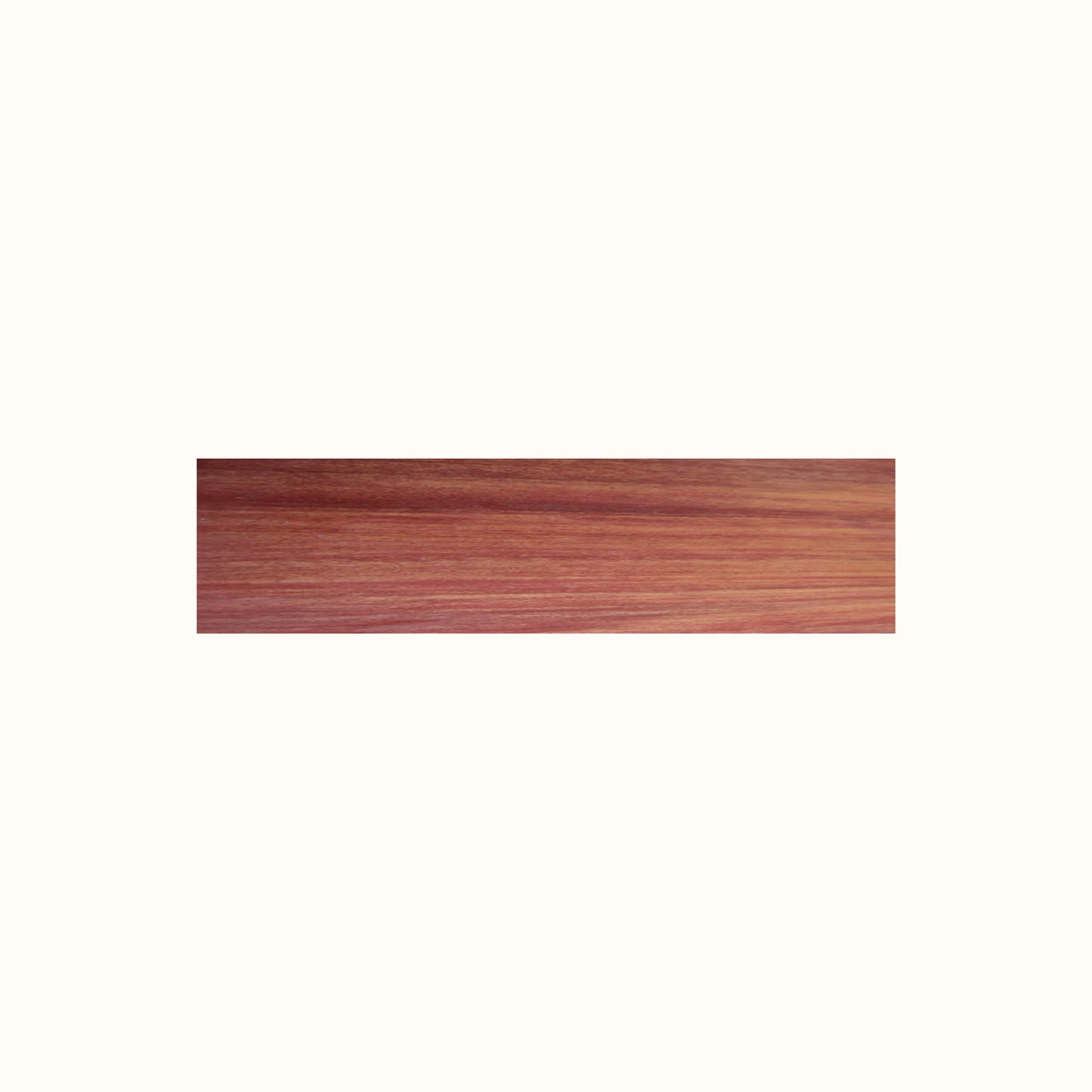Chakte Kok Plank
Chakte Kok Plank
Couldn't load pickup availability
Revolutionise your woodworking designs with our premier Chakte Kok Wood Plank.
A top-tier selection famed for its outstanding hardness and vibrant visual charm. Chakte Kok, renowned for its solid durability and striking red hues, is an exemplary choice for crafting projects that require a perfect marriage of long-lasting strength and striking aesthetics.
Find out more about this wood on the Wood Dictionary
For custom measurements, please email us hello@mayalumber.com
Colour & Grain
Colour & Grain
Colour: Chakte Kok is well-known for its striking heartwood, which ranges from a vibrant orange to a deep, rich red color. The intensity of the colour can vary, sometimes even within the same piece of wood.
The sapwood of Chakte Kok is typically pale yellow, contrasting sharply with the heartwood.
Grain: The grain of Chakte Kok is typically straight, though it can sometimes be interlocked or wavy.
Texture: The wood's texture is generally fine to medium, contributing to a smooth finish when polished.
Aging and Exposure: Over time and with exposure to light, the vivid colour of Chakte Kok tends to darken slightly, evolving into a more subdued and deeper reddish hue, which is often considered even more attractive.
Durability
Durability
Resistance to Decay: Chakte Kok has a good natural resistance to rot and decay, which is a significant attribute for wood used in furniture and other woodworking projects, especially those that may be exposed to varying environmental conditions.
Hardness: It is a hard and dense wood, which contributes to its overall durability. This hardness makes it resistant to scratches and wear, suitable for items that will see regular use.
Stability: Chakte Kok is known for its dimensional stability. It tends to resist warping and twisting, which is particularly important in applications where maintaining shape and form over time is crucial.
Resistance to Insects: The wood has a natural resistance to termites and other wood-boring insects, enhancing its suitability for long-lasting furniture and construction.
Longevity: With proper care and maintenance, items made from Chakte Kok can last for many years, retaining their structural integrity and aesthetic appeal.
Common Applications
Common Applications
Fine Furniture: Its striking color and durability make Chakte Kok ideal for high-quality furniture pieces like tables, chairs, cabinets, and decorative inlays.
Woodturning: The wood's density and beautiful coloration make it popular for turned objects such as bowls, vases, and ornamental pieces.
Musical Instruments: Its acoustic properties and aesthetic appeal are appreciated in the manufacture of certain musical instruments, especially for decorative elements.
Decorative Items and Carvings: The vivid color and fine grain of Chakte Kok make it suitable for detailed carvings and decorative items, adding a unique and exotic touch.
Cabinetry and Millwork: The wood's durability and attractive appearance are valued in cabinetry, especially for accent pieces or specialty woodwork.
Flooring and Parquetry: Its hardness and resistance to wear can make it a good choice for flooring, including intricate parquet designs.
Architectural Accents: Used in interior design for features like paneling, trim, and other decorative architectural elements.
Specialty Wood Products: Including luxury items, jewellery boxes, picture frames, and other high-end woodcrafts.
Moisture Content
Moisture Content
Green Moisture Content: When freshly cut, Chakte Kok, like other woods, contains a high moisture content. This initial moisture level can be quite significant, often a substantial percentage of the wood's weight.
Drying Process: After harvesting, the wood needs to be carefully dried to reduce its moisture content. This process is crucial to minimize issues like warping, cracking, or splitting. The drying must be done gradually and carefully, considering the wood's density and grain structure.
Equilibrium Moisture Content (EMC): Once dried, Chakte Kok will reach an equilibrium moisture content where it neither gains nor loses moisture in a given environment. The EMC depends on the relative humidity and temperature of the surrounding environment. For indoor use in temperate climates, the EMC for hardwoods like Chakte Kok typically ranges from 6% to 12%.
Application Specific: The ideal moisture content for Chakte Kok will vary depending on its intended use and the conditions of the environment where the finished product will be placed. For example, wood used for indoor furniture in a controlled climate will have a different ideal moisture content compared to wood used for outdoor applications.
Physical & Mechanical Characteristics
Physical & Mechanical Characteristics
- Density: 660 kg/m³
- Modulus of Elasticity (MOEFLEX): 121380 cm³
- Resistance to Elastic Limit (RLEFLEX): 405 kg/cm²
- Flex Rupture Resistance (RR): 840 kg/cm²
- Modulus of Elasticity Compression Parallel (MOECom): 130225 kg/cm²
- Resistance to Elastic Limit Compression Parallel (RLECom): 271 kg/cm²
- Resistance to Rupture Compression Parallel (RR Com): 443 kg/cm²
- Perpendicular Resistance to Elastic Limit Compression Perpendicular (RLE Com): 439 kg/cm²
- Resistance to Rupture Shear Parallel (RR Corte) : 443 kg/cm²
- Lateral Hardness for Side Face (JK Lateral): 555 kg
- Lateral Hardness for Transverse Face (JK Lateral): 650 kg
Safety Considerations
Safety Considerations
Allergic Reactions: Some individuals may experience allergic reactions to wood dust. Symptoms can include skin, eye, and respiratory irritation. If you have a known sensitivity to wood dust or experience any adverse reactions, it's important to take additional precautions.
Dust Inhalation: Wood dust, in general, can be harmful if inhaled in large quantities over time. It's important to work in a well-ventilated area and use appropriate dust collection systems and personal protective equipment, such as masks or respirators, especially when sanding or cutting the wood.
Skin Protection: Wear gloves to protect your hands from splinters and potential irritants in the wood.
Eye Protection: Always wear safety goggles or glasses to protect your eyes from wood chips and dust when cutting, sanding, or working with the wood in any way that could produce debris.
Safe Handling Practices: Use proper techniques and tools to handle and work with the wood safely to avoid accidents or injuries.
Shipping
Shipping
Share


